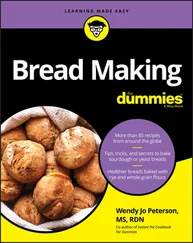1 ...8 9 10 12 13 14 ...19 Widow/widower (at any age), caring for a child under 16: You get 75 percent of the covered worker’s PIA.
Disabled widow/widower ages 50 to 59: You get 71.5 percent of the covered worker’s PIA.
Child survivor under 18 (or up to age 19 if still in high school and unmarried): You get 75 percent of the covered worker’s PIA. The Social Security family maximum (see Chapter 10) may apply in households with multiple beneficiaries. Stepchildren and grandchildren fall into this category, too, subject to the family maximum.
Child of retiree under 18 (or up to age 19 if still in high school and unmarried): You get 50 percent of the covered worker’s PIA. Stepchildren and grandchildren fall into this category, too, subject to the family maximum.
Disabled adult child of retiree age 18-plus: You get 50 percent of the covered worker’s PIA.
Disabled adult child of deceased worker age 18-plus: You get 75 percent of the covered worker’s PIA.
Grandchild of retiree: You get 50 percent of the covered worker’s PIA (if you meet rules for eligibility).
Grandchild of deceased worker/retiree: You get 75 percent of the covered worker’s PIA (if you meet rules for eligibility).
Parents of deceased worker/retiree: You get 82.5 percent of the covered worker’s PIA if one parent is claiming benefits, 75 percent of the covered worker’s PIA if two parents are claiming benefits.
Survivor benefits can help a household get back on its feet after a death, providing long-term support to growing children, surviving spouses, and sometimes older parents of the worker. Here are the most common categories of relatives who may qualify for Social Security survivor benefits upon the death of a breadwinner:
Widows and widowers without young children: In a noteworthy difference from retirement benefits, these benefits may be collected at a reduced level, as early as age 60. Widowed survivors who are disabled may collect benefits starting at age 50.
Widows and widowers raising the deceased worker’s child who is under 16: In such cases, the surviving parent can be any age.
Children: To qualify, children must be under 18 or up to 19 if they are full-time students who haven’t yet graduated from high school and are unmarried. Disabled children qualify at any age if they were disabled before age 22. Benefits may go to stepchildren, grandchildren, and step-grandchildren as well.
Parents: Surviving parents qualify if they were dependent on the worker for at least half of their financial support.
Divorced spouses: Former partners may qualify for a survivor benefit if the marriage lasted at least ten years and if they don’t remarry before age 60.
How much you get in survivor benefits varies depending on your situation. In the following sections, I cover the main categories of survivors so you can see how you and your family may fare.
Spouses generally are expected to have been married for nine months to qualify for survivor benefits, but exceptions to the nine-month rule can be made if the widow or widower is the parent of the deceased worker’s child. (Exceptions to the nine-month marriage rule are also made if a breadwinner dies in an accident or in the line of duty as a member of a uniformed service.)
Surviving spouses who wait until full retirement age to collect survivor benefits could get up to 100 percent of the benefit amount received by the deceased partner. Survivor benefits can be collected as early as age 60, but the benefit is reduced for each month it’s taken before full retirement age — a difference that, over time, can add up to many thousands of dollars.
 For widow’s and widower’s benefits, the reduction rate ranges from
For widow’s and widower’s benefits, the reduction rate ranges from  of 1 percent per month (for a person whose full retirement age is 65) to
of 1 percent per month (for a person whose full retirement age is 65) to  of 1 percent per month (for a person whose full retirement age is 67). The reduction is computed for the time period starting when benefits are received until the widow or widower reaches his or her full retirement age.
of 1 percent per month (for a person whose full retirement age is 67). The reduction is computed for the time period starting when benefits are received until the widow or widower reaches his or her full retirement age.
Widowed applicants are asked to sign Form SSA-4111, which discloses that benefits taken before their full retirement age are reduced. You can go to www.ssa.gov/forms/ssa-4111.pdf to print the form.
Note: The full retirement age for survivor benefits (for widows and widowers) may be slightly different than the full retirement age for workers and spouses, depending on your date of birth. The full retirement age for survivors is gradually rising to 67 for people born in 1962 or later. The full retirement age for workers and spouses is gradually rising to 67 for people born in 1960 or later.
Benefit amounts for widows and widowers are also affected by whether the deceased partner had begun collecting Social Security benefits:
If the deceased hadn’t yet begun collecting retirement benefits, the surviving spouse could get 100 percent of the deceased spouse’s full retirement benefit (the PIA; see the earlier sidebar “Social Security’s benchmark for benefits: The primary insurance amount” for more information), as computed by Social Security.
If the deceased had already begun collecting retirement benefits, the survivor payment is the lower of the following:The benefit based on 100 percent of the deceased individual’s PIA reduced by any months before the survivor’s full retirement ageThe larger of (a) the amount that was going to the deceased or (b) 82.5 percent of the deceased worker’s PIA
 The death of a higher-earning spouse may mean higher benefits for the survivor, even if the survivor is already collecting retirement benefits. When a spouse dies, the survivor should remind the SSA that he or she is getting benefits based on his or her own record. The SSA then checks to see whether the amount should be increased because of survivor protections. If that’s the case, the SSA provides a combined benefit — the survivor’s own retirement benefit plus an extra amount, so the total equals the full survivor benefit under the deceased spouse’s record.
The death of a higher-earning spouse may mean higher benefits for the survivor, even if the survivor is already collecting retirement benefits. When a spouse dies, the survivor should remind the SSA that he or she is getting benefits based on his or her own record. The SSA then checks to see whether the amount should be increased because of survivor protections. If that’s the case, the SSA provides a combined benefit — the survivor’s own retirement benefit plus an extra amount, so the total equals the full survivor benefit under the deceased spouse’s record.
What happens if you’re a survivor with an earnings record of your own? It depends on whether you’ve already started collecting retirement benefits:
If you haven’t yet started collecting your own Social Security retirement benefits on your own work record: As a surviving spouse, you may choose to collect a survivor’s benefit, while allowing your own unclaimed retirement benefits to increase in value. Later, if your unclaimed retirement benefit has exceeded the amount of your survivor’s benefit, you may switch to your own retirement benefit. (The SSA doesn’t allow you to claim both and simply add them up.) These rules are potentially complex, so it’s a good idea to consult with a Social Security representative if you qualify for survivor and retirement benefits.
If you’re already collecting Social Security retirement benefits on your own work record: If the survivor benefit you now qualify for is higher than the retirement benefit you’re already collecting, the SSA adds a benefit to your retirement amount, creating a combined benefit equal to the higher survivor’s benefit. If the amount you would get as a survivor is lower than what you’re receiving already as a retiree, the SSA leaves your retirement benefit alone.
Читать дальше

 For widow’s and widower’s benefits, the reduction rate ranges from
For widow’s and widower’s benefits, the reduction rate ranges from  of 1 percent per month (for a person whose full retirement age is 65) to
of 1 percent per month (for a person whose full retirement age is 65) to  of 1 percent per month (for a person whose full retirement age is 67). The reduction is computed for the time period starting when benefits are received until the widow or widower reaches his or her full retirement age.
of 1 percent per month (for a person whose full retirement age is 67). The reduction is computed for the time period starting when benefits are received until the widow or widower reaches his or her full retirement age. The death of a higher-earning spouse may mean higher benefits for the survivor, even if the survivor is already collecting retirement benefits. When a spouse dies, the survivor should remind the SSA that he or she is getting benefits based on his or her own record. The SSA then checks to see whether the amount should be increased because of survivor protections. If that’s the case, the SSA provides a combined benefit — the survivor’s own retirement benefit plus an extra amount, so the total equals the full survivor benefit under the deceased spouse’s record.
The death of a higher-earning spouse may mean higher benefits for the survivor, even if the survivor is already collecting retirement benefits. When a spouse dies, the survivor should remind the SSA that he or she is getting benefits based on his or her own record. The SSA then checks to see whether the amount should be increased because of survivor protections. If that’s the case, the SSA provides a combined benefit — the survivor’s own retirement benefit plus an extra amount, so the total equals the full survivor benefit under the deceased spouse’s record.










